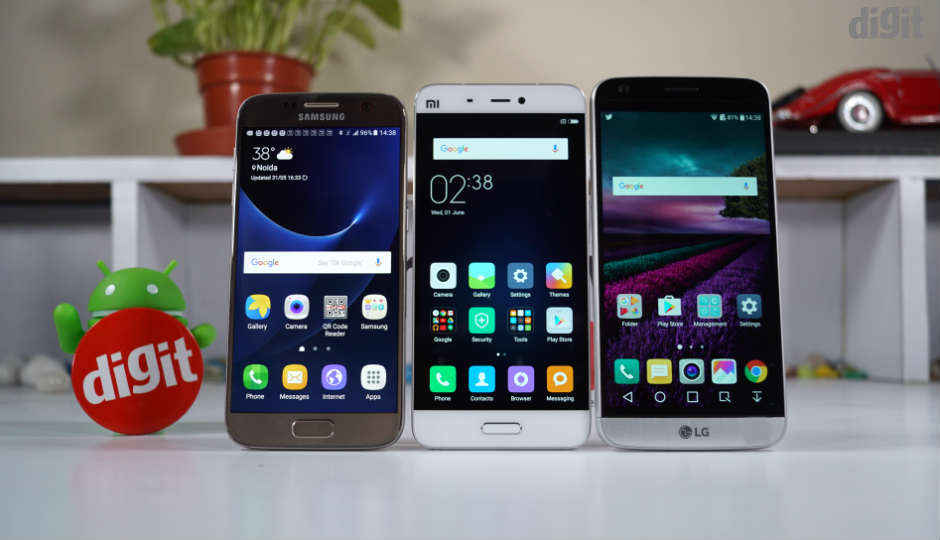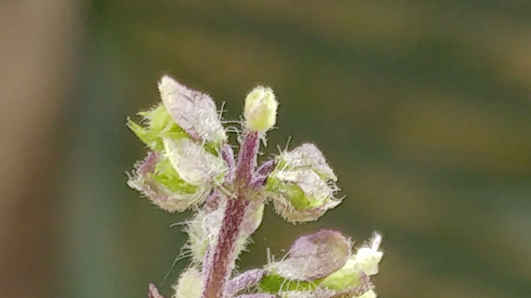LG G5 vs Samsung Galaxy S7 vs Xiaomi Mi 5: Camera test
When you have three flagships and want to know which one has the best camera, it calls for a Digit comparison.

Camera is one of the primary requirements for people who want to invest in a flagship class smartphone. It is almost the middle of 2016 and most smartphone makers have already launched their flagship phones in India. After Samsung, HTC and Xiaomi, LG has joined the ranks, launched the LG G5 today. While the phone itself performs quite well and offers all the features you may require from a flagship device, we were intrigued by the new dual camera setup.
 Survey
SurveyThis comparison aims to find out how it fares against its other flagship counterparts.
Before we begin, you should know that we are comparing only the primary cameras on the three phones. The secondary wide angle 8MP fish-eye camera in the LG G5 will be left out for now. We will be adding a few images from this camera, for your consideration. You can learn all about this camera in the LG G5 review.
Macro shot in natural light
The images you see below has been taken in normal lighting conditions. Here, the Samsung Galaxy S7 and the LG G5 keep the ISO less than 75, the Xiaomi Mi 5, on the other hand, takes the ISO count up to 166, and overexposes the image a little. Cropping the image to 100 percent, we noticed that the noise levels in the Xiaomi Mi 5 and the Samsung Galaxy S7 are higher compared to the LG G5. Further, we find that LG G5 has a better colour saturation than the other two phone. It’s worth noting that we have taken better shots with the Galaxy S7 Edge, than the Galaxy S7 unit we have. This is a result of multiple camera sensor vendors that Samsung employs. (Click on a cropped image to see the full size image)
100 percent crop of the image taken by LG G5
100 percent crop of the image taken by Samsung Galaxy S7
100 percent crop of the image taken by Xiaomi Mi 5
Normal Outdoor shot
Images taken by the LG G5 in normal outdoor setting under sunlight look warmer, compared to the images taken by the Xiaomi Mi 5 and the Galaxy S7. Although, at 100 percent crop, the level of detail seems to be better on the Samsung Galaxy S7. The images taken by the LG G5 look a bit overexposed, compared to the S7. While the detailing is also good on the Xiaomi Mi 5, the image look oversaturated compared to the other two. (Click on a image to see the full size image)
(L to R) – LG G5, Samsung Galaxy S7, Xiaomi Mi 5
Indoors shot in white light
As we moved indoors, and light deteriorates, the LG G5 and Xiaomi Mi 5 tend to lag behind the Samsung Galaxy S7. Under fluorescent light, the Samsung Galaxy S7’s camera begins to shine. The camera algorithm used by the this camera is offers better colour saturation as well as a more detailed image. Check out the 100 percent cropped image given below. The details on Pagan Min’s hair on the Far Cry 4 poster. (Click on a cropped image to see the full size image)
100 percent crop of the image taken by LG G5
100 percent crop of the image taken by Samsung Galaxy S7
100 percent crop of the image taken by Xiaomi Mi 5
Images taken with a single light source
To find out, how the three phones would perform under dim lighting, we clicked the images below with a single white light source. The Samsung S7 aces this test as well, with controlled colour reproduction, and lower noise levels. In comparison, the LG G5 toned down the colours, making the image look slightly cooler. While the focusing seems fine, there is much background noise compared to the Samsung phone. The Xiaomi Mi 5 does a decent job as well, and shows saturation than the LG G5. While Xiaomi’s camera software keeps the noise levels in check, the depth of field isn't the best. (Click on the image to see the full size image)
(L to R) – LG G5, Samsung Galaxy S7, Xiaomi Mi 5
Image taken in low light
As we turned the lights down further, images taken by the Samsung Galaxy S7 remain more visible and brighter, compared to the LG G5 and Xiaomi Mi 5. That said, we find that even with recorded ISO 3199, the Xiaomi Mi 5 is unable to do well. Whereas, the ISO counts jumps to 1250 on S7. At 100 percent crop, we found that images clicked by the Mi 5 are far too noisy to be used. (Click on the cropped image to see the full size image)
100 percent crop of the image taken by LG G5
100 percent crop of the image taken by Samsung Galaxy S7
100 percent crop of the image taken by Xiaomi Mi 5
On the other hand, images from the Galaxy S7 are much better. Lastly, the image taken by the LG G5 is only partially visible, but the noise levels are kept at a minimum. It is worth noting that the Samsung Galaxy S7’s camera is the fastest of the lot in low light conditions, thanks to the dual-pixel mechanism.
Out of the three, the LG G5 provides the most control over the camera. This gives you more granular control on how images look, if you’re willing to invest the effort. The Samsung Galaxy S7 is the best of the lot, thanks to its low light prowess, while the Mi 5 is too weak here.
To sum it up, the Samsung Galaxy S7 is the best camera for those shooting on auto mode, while the LG G5 is a good choice for those who have better knowledge of manual controls (it allows RAW shots as well). The Xiaomi Mi 5 is fine for its price range, but it definitely isn’t amongst the best camera phones in the market today.
Hardik Singh
Light at the top, this odd looking creature lives under the heavy medication of video games. View Full Profile














